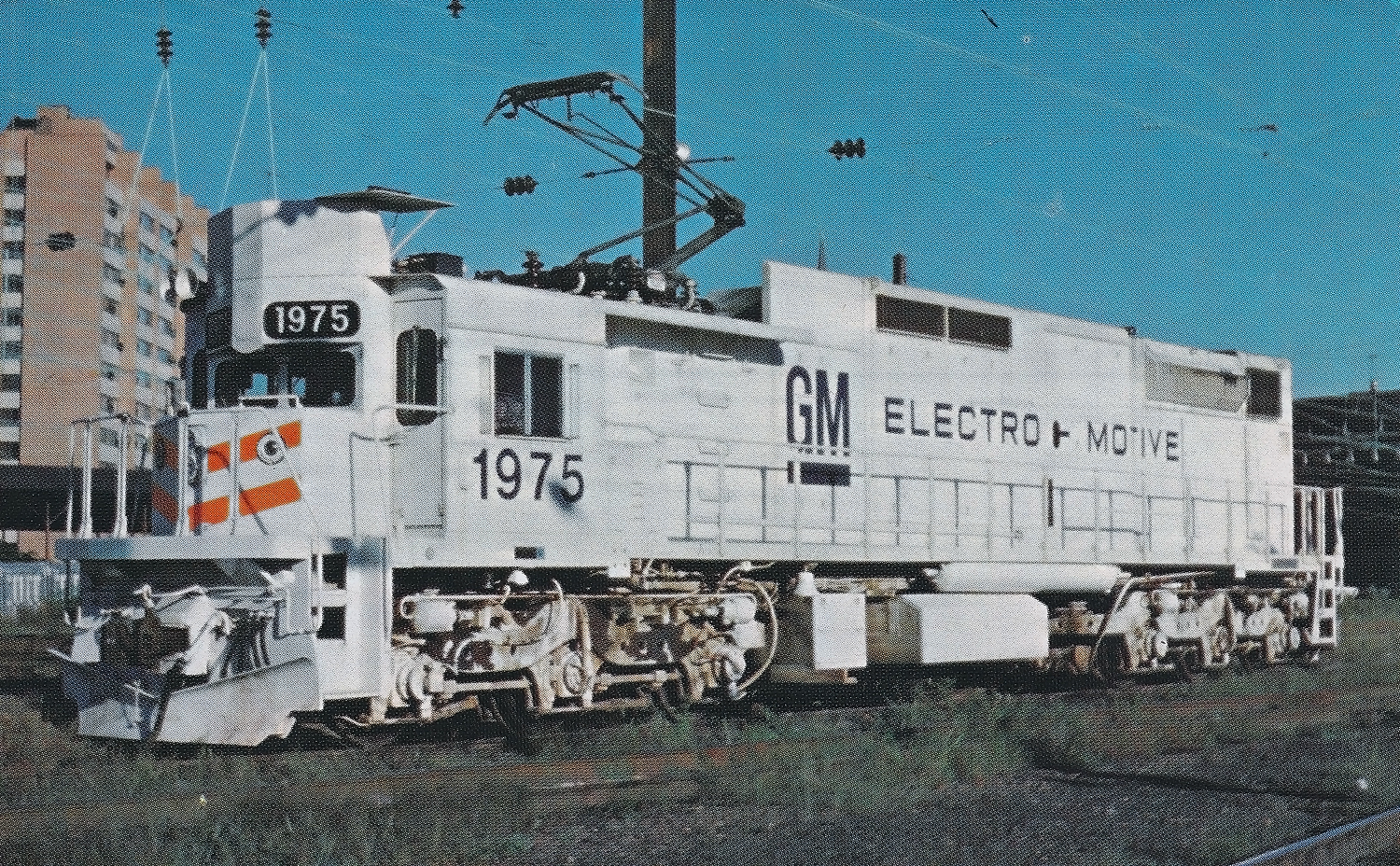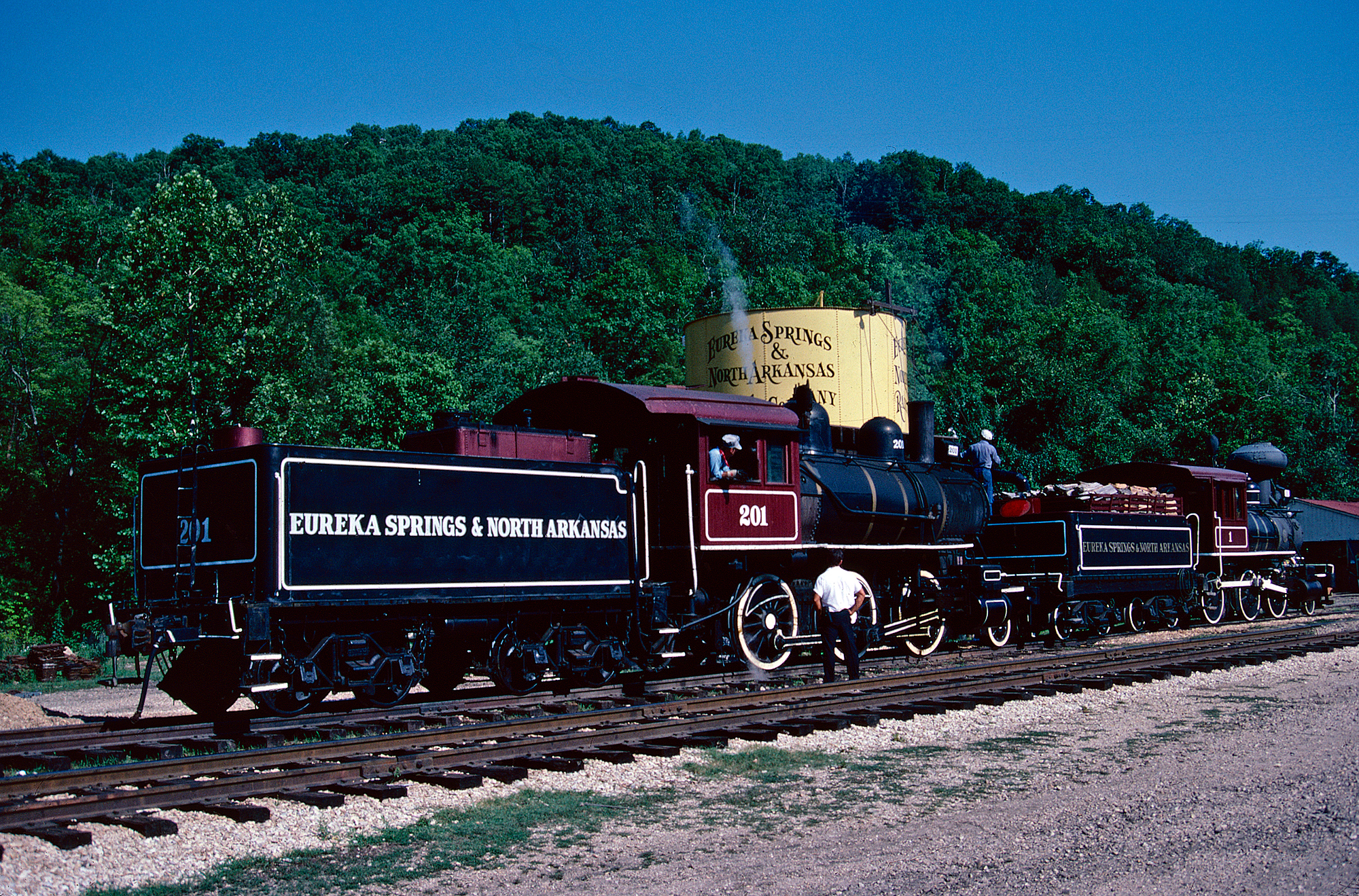The "GM6C": A Modern Freight Electric
Last revised: August 29, 2024
By: Adam Burns
Introduced during the second half of the 20th century, the GM6C was Electo-Motive's initial entrant into the modern electric locomotive field.
This particular design was produced by Electro-Motive Division, in conjunction with Sweden's ASEA; both builders were known - even by the 1970s - for their quality and innovative products. A subsidiary of General Motors (GM) until 2005, EMD was later acquired by Caterpillar Inc. in 2010.
Of the two testbed electrics EMD produced in 1975-1976 - in response to the ongoing energy crisis - the GM6C was the more utilitarian. The locomotive was standard road-switcher capable of producing 6,000 horsepower with an ability to handle essentially any freight assignment.
The motor proved its worth but ultimately no railroads elected to spend the enormous capital necessary to energize key portions of their main lines as the crisis had eased by decade's end. After sitting in EMD's backlot for several years the lone demonstrator was eventually scrapped in the mid-1980s.
Photos
 EMD GM6C demonstrator #1975 rests at Harrisburg, Pennsylvania on the former PRR, circa 1976. Ronald Johnson photo. American-Rails.com collection.
EMD GM6C demonstrator #1975 rests at Harrisburg, Pennsylvania on the former PRR, circa 1976. Ronald Johnson photo. American-Rails.com collection.Development
The GM6C was designed as a comprehensive and efficient solution for high-speed, heavy-haul rail transportation.
The model was a part of EMD's larger vision to expand its market by entering into the electric arena following the crippling oil embargo of 1973, which dramatically raised fuel prices.
The shift towards electrification was perceived as a more sustainable and cost-effective approach for long haul freight service during a time when the future of fuel prices was uncertain.
Ironically, the Milwaukee Road had just recently (June, 1974) discontinued electrified operations over the 654 miles of its western Pacific Coast Extension and was immediately faced with rising fuel costs.
As Brian Solomon notes in his book, "EMD Locomotives," both the Southern Pacific and Burlington Northern were strongly considering electrifying key portions of their main lines due to the ongiong embargo.
In addition, Conrail still operated freight trains over the former PRR's 11 kV 25 Hz electrification between Harrisburg, Pennsylvania and the Northeast Corridor.
Design
The GM6C was Electro-Motive's first testbed motor completed, outshopped in April, 1975. It was a conventional, six-axle road-switcher riding on EMD's SD40-2 frame, featured the builder's new HTC truck, and offered 6,000 horsepower.
Built in conjunction with ASEA (Allmänna Svenska Elektriska Aktiebolaget, or Universal Swedish Electric Co., Ltd.) - EMD provided the locomotive's overal carbody, trucks, and auxiliary equipment, while the Swedish manufacturer supplied the electrical equipment.
The model's naming was fairly straightfoward - 'GM' represents the parent company, General Motors, while '6C' stood for the six axles in a 'C-C' wheel configuration.
The electric power setup allowed for fast acceleration and high-speed operations over a prolonged period, making it an ideal fit for long-distance freight services.
Moreover, the GM6C offered remarkable efficiency benefits. The electric operation eliminated the need for refueling stops, which increased the overall service availability of the locomotive. Furthermore, the electrification led to significant reductions in emissions, making this model an environment-friendly choice.
Aesthetically, the GM6C was designed to bear a striking resemblance to its diesel counterparts. GM ensured to carry forward its traditional diesel-electric design DNA, making the electric models look familiar to the railroad staff and customers.
It featured a standard off-set cab at one end with a short, low hood followed by the trailing long hood. The pantograph was located directly over the cab, which sat lower than traditional diesels to make room for this component.
From an operational standpoint, the motor proved a fine locomotive and spent considerable time testing in general road service ahead of Conrail freights.
Unfortunately, railroads elected not to spend the massive capital necessary to energize key portions of their main lines and no orders for either the GM6C, or GM10B, were ultimately taken.
In addition, Conrail was facing two significant issues; correcting the mess left by Penn Central's collapse and ending remaining electrified freight service altogether due to Amtrak's increased hostility to such trains on the NEC.
Reception
Despite being ahead of its time in terms of eco-friendliness and operating efficiency, the GM6C suffered from a lack of widespread adoption. The high infrastructural cost associated with electrified railroad networks deterred rail operators from transitioning to electric power.
EMD’s gamble wasn't successful in shifting the railroad sector towards electrification, and the GM6C became a notable model in locomotive history that projected a future possibility that seemed too expensive at its time.
However, it's worth mentioning the GM6C was more than just a locomotive design. It was a symbol of a bold attempt to redefine railroad transportation during a crucial time in history. It signaled a crucial shift in the locomotive industry that was envisioned, but not entirely accepted, during the second part of the 20th century.
Production Roster
| Owner | Road Number | Order Number | Serial Number | Date Built |
|---|---|---|---|---|
| EMD | 1975 (renumbered 4975) | 75606 | 75606-1 | 4/1975 |
Data Sheet and Specifications
| Entered Production | 4/1975 (Demonstrator #1975) |
| Years Produced | 4/1975 |
| Model Specification | GM6C |
| Current | 11 kv, 25 hz |
| Horsepower | 6000 |
| Carbody Styling | GM |
| Length (Between Coupler Pulling Faces) | 68' 10" |
| Width | 10' |
| Height Above Rail Head | 14' 9 ½" |
| Weight | 365,000 Lbs |
| Trucks | C-C |
| Truck Type | HTC |
| Truck Wheelbase | 13' 7" |
| Wheel Size | 42" |
| Traction Motors | EMD E88X (6) |
| Traction Generator | D79MA75 (EMD) |
| Tractive Effort Rating | 126,000 Lbs (Starting): 44,000 Lbs @ 46 mph (Continuous) |
Legacy
The legacy of the GM6C lives on today, not just as a train model but as an example of technological pioneering. It serves as a powerful reminder and a benchmark of what is technically achievable in electric locomotive design. This historical piece of engineering, quite ahead of its time, continues to inspire modern locomotive producers.
It sets the bar high for the pursuit of eco-friendly and efficient rail transport, a goal that the industry continues to strive for, even today. Today, the conversation around electric trains has been reignited thanks to the urgent need for sustainable transport solutions. In this context, the GM6C holds crucial lessons for the future.
Sources
- Cook, Preson. Testing EMD electric freight locomotives. Classic Trains Magazine, Kalmbach Publishing Company (May 31, 2022). Retrieved March 15, 2024. https://www.trains.com/ctr/railroads/locomotives/testing-emd-electric-freight-locomotives/.
- Marre, Louis A. and Pinkepank, Jerry A. Contemporary Diesel Spotter's Guide, The: A Comprehensive Reference Manual To Locomotives Since 1972. Milwaukee: Kalmbach Publishing Company, 1989.
- Solomon, Brian. EMD Locomotives. Minneapolis: MBI Publishing Company, 2006.
Contents
Recent Articles
-
Arizona Railroad Museums: A Complete Guide
Apr 16, 25 01:17 PM
Learn about Arizona's rich history with railroads at one of several museums scattered throughout the state. More information about these organizations may be found here. -
Arkansas Railroad Museums: A Complete Guide
Apr 16, 25 12:59 PM
The state of Arkansas is home to a handful of small railroad museums. Learn more about these organizations here. -
Alabama Railroad Museums: A Complete Guide
Apr 16, 25 12:30 PM
Alabama, with its storied past and vibrant connection to the railroad industry, is home to several captivating railroad museums.

